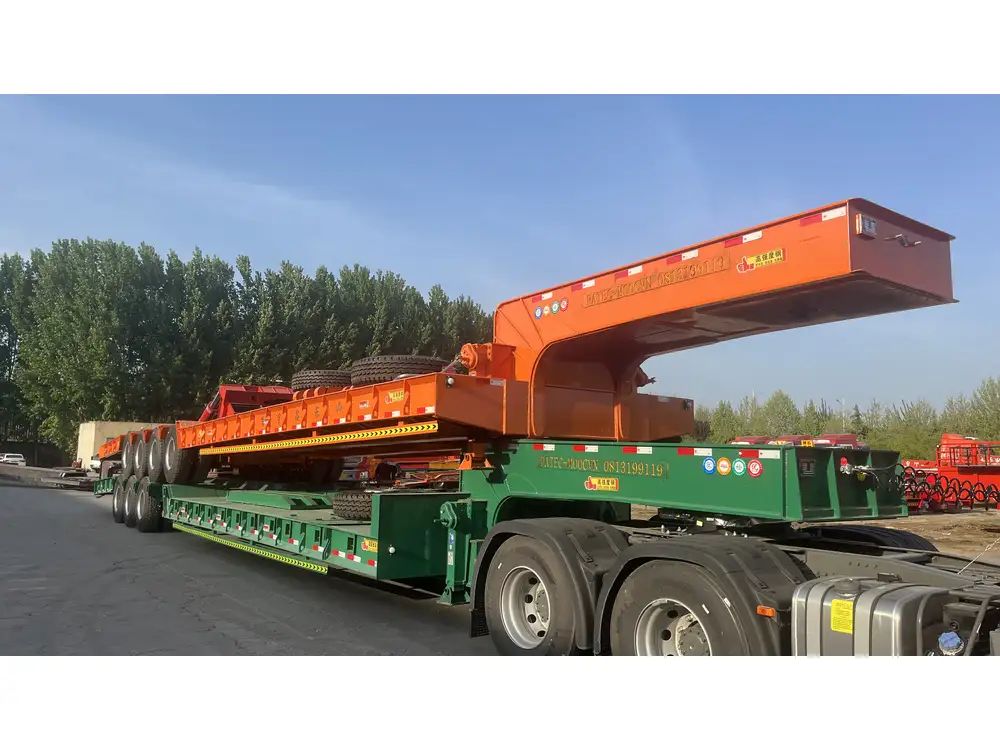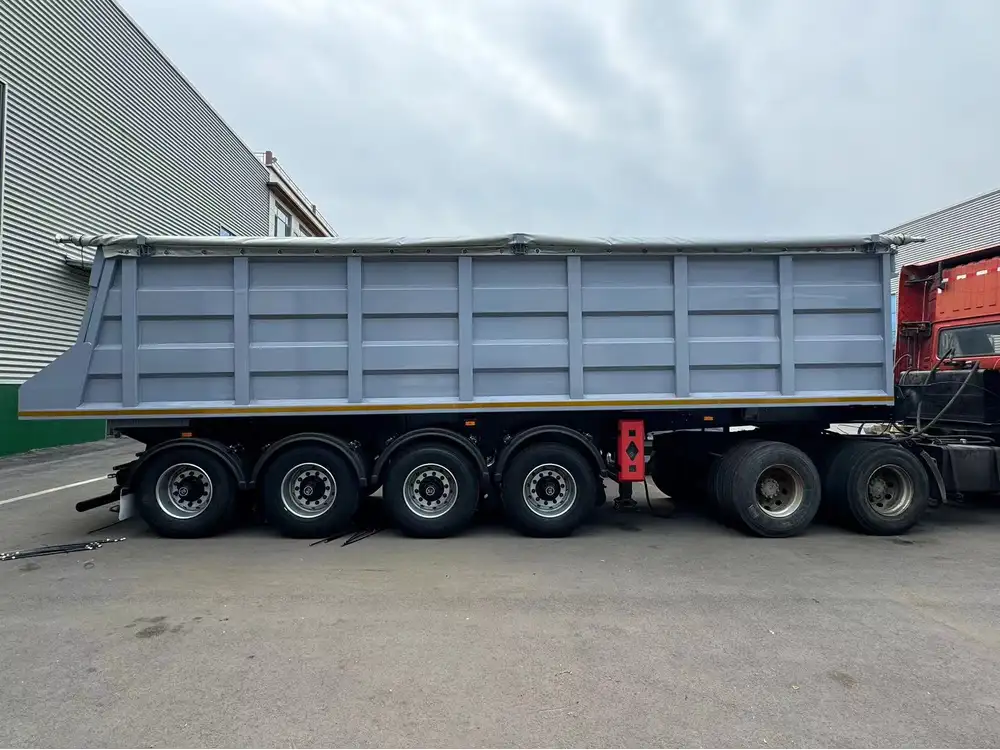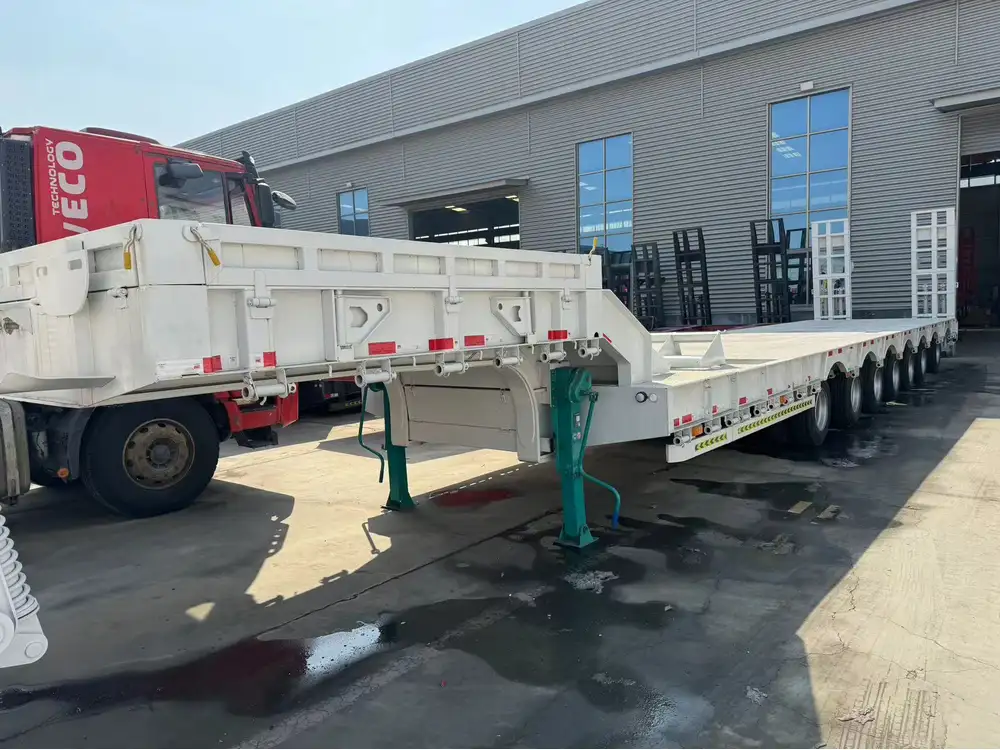In the trucking and transportation industries, few components are as vital as the hydraulic dump trailer jack. This mechanism is essential for lifting and lowering trailer bodies, making it crucial for a variety of operations, including loading and unloading materials. However, what happens when your hydraulic dump trailer jack develops a leak? Understanding how to address this issue is paramount not only for efficiency but also for safety. In this guide, we will delve deep into the repair process, dissecting the problem to arm you with the knowledge needed to tackle leaks effectively.
Table of Contents
- Understanding the Hydraulic Manual Dump Trailer Jack
- Common Causes of Hydraulic Leaks
- Diagnosing the Leak
- Visual Inspection
- Functional Testing
- Repairing the Hydraulic Manual Dump Trailer Jack
- Required Tools and Materials
- Step-by-Step Repair Process
- Preventive Maintenance Tips
- When to Seek Professional Help
Understanding the Hydraulic Manual Dump Trailer Jack
Hydraulic dump trailer jacks function on the principles of hydraulics, which utilize fluid pressure to perform work. The components of a hydraulic jack include:
- Cylinder: The main body where hydraulic fluid is stored.
- Piston: Moves up and down to lift and lower the trailer bed.
- Seals: Prevent hydraulic fluid from leaking out of the cylinder.
- Hydraulic Fluid: Transmits force throughout the system.
Understanding these components will help in diagnosing and fixing leaks more effectively.

Common Causes of Hydraulic Leaks
Hydraulic leaks can stem from various sources, and identifying the root cause is critical for a proper repair. Here are some of the most prevalent reasons:
| Cause | Description |
|---|---|
| Worn Seals | Over time, seals can deteriorate due to friction, temperature extremes, or aging. |
| Cracks or Damage to the Cylinder | Physical impacts or corrosion can compromise the integrity of the cylinder. |
| Loose Fittings | Vibration and wear can loosen fittings, allowing fluid to escape. |
| Fluid Contamination | Contaminated hydraulic fluid can cause internal damage leading to leaks. |
Diagnosing the Leak
Before initiating repairs, it’s essential to accurately diagnose the leak.
Visual Inspection
Begin with a thorough visual inspection:
- Look for pooled fluid beneath the jack.
- Check for wetness or dripping around seals and connections.
- Examine the hydraulic lines for signs of wear, cracks, or bulges.

Functional Testing
After a visual check, perform a functional test:
- Pump the jack up and down several times.
- Observe for fluid leakage during the lift and lower cycles.
- Listen for any unusual sounds, which may indicate internal damage.
Repairing the Hydraulic Manual Dump Trailer Jack
Once you have verified the source of the leak, you can proceed with repairs. Below are the tools and processes required.
Required Tools and Materials
- Wrenches and Socket Set: For loosening and tightening fittings.
- Screwdrivers: To remove any panels if necessary.
- Replacement Seals/Gaskets: Specific to the jack model.
- Hydraulic Fluid: To refill the system once repairs are completed.
- Cleaning Rags: For wiping any spills and keeping working areas clean.

Step-by-Step Repair Process
Step 1: Prepare the Work Area
Ensure the trailer is parked on a level surface and secure the jack.
Step 2: Drain Hydraulic Fluid
Place a container underneath the jack and open the drain valve to remove any old fluid.
Step 3: Remove the Jack
Carefully remove the jack from the trailer using the necessary tools. This may involve unscrewing bolts and disconnecting hydraulic lines.
Step 4: Repair or Replace the Seals
- Inspect the seals for damage. If they are worn, replace them with the new seals.
- Clean the groove where the seal sits and apply a thin film of hydraulic fluid to aid in installation.
Step 5: Inspect the Cylinder
Check the cylinder for cracks or corrosion. If damaged, the cylinder may need to be replaced.
Step 6: Tighten Loose Fittings
Use a wrench to secure all fittings tightly, ensuring there are no gaps for fluid to escape.
Step 7: Reassemble the Jack
Reassemble the jack carefully, ensuring all connections are secure and fittings properly seated.
Step 8: Refill with Hydraulic Fluid
After the jack is reinstalled, refill it with hydraulic fluid through the fill hole. Be cautious not to overfill.
Step 9: Test the Jack
Once the fluid has been added, perform several lift and lower cycles to test for leaks. Monitor closely during this phase for any signs of continuing issues.
Preventive Maintenance Tips
Maintaining your hydraulic manual dump trailer jack can prevent leaks and extend its lifespan. Here are some effective tips:
- Regular Inspections: Conduct weekly checks for wear and tear.
- Keep Hydraulic Fluid Clean: Replace fluid regularly to avoid contamination.
- Avoid Overloading: Understand the weight limits of the jack and adhere to them.
- Lubricate Moving Parts: Regularly lubricate pivot points and joints to reduce wear.
- Store Properly: When not in use, store the trailer in a dry, protected environment to avoid corrosion.
When to Seek Professional Help
Not every leak can be repaired by the DIY method outlined. If you encounter any of the following situations, it’s advisable to consult a professional mechanic:
- Persistent Leaking: If leakage continues after repairs.
- Cylinder Damage: Significant cracks or bending indicate that the cylinder should be replaced.
- Complex Systems: Some hydraulic systems are intricate and may require specialized tools and knowledge for proper servicing.
- Safety Concerns: Always prioritize safety; if unsure, seeking professional assistance is wise.

Conclusion
A leaking hydraulic manual dump trailer jack can disrupt operations, leading to delays and safety hazards. However, by understanding the mechanics at play, diagnosing issues accurately, and following a structured repair approach, you can effectively address the problem. Moreover, implementing preventive maintenance strategies will ensure that your trailer jack remains in optimal condition for years to come. In the world of logistics and transportation, a functional hydraulic system is not just a convenience—it is an absolute necessity. The knowledge you gain from this guide equips you to confront and resolve hydraulic jack problems proactively, safeguarding your equipment and enhancing operational efficiency.



